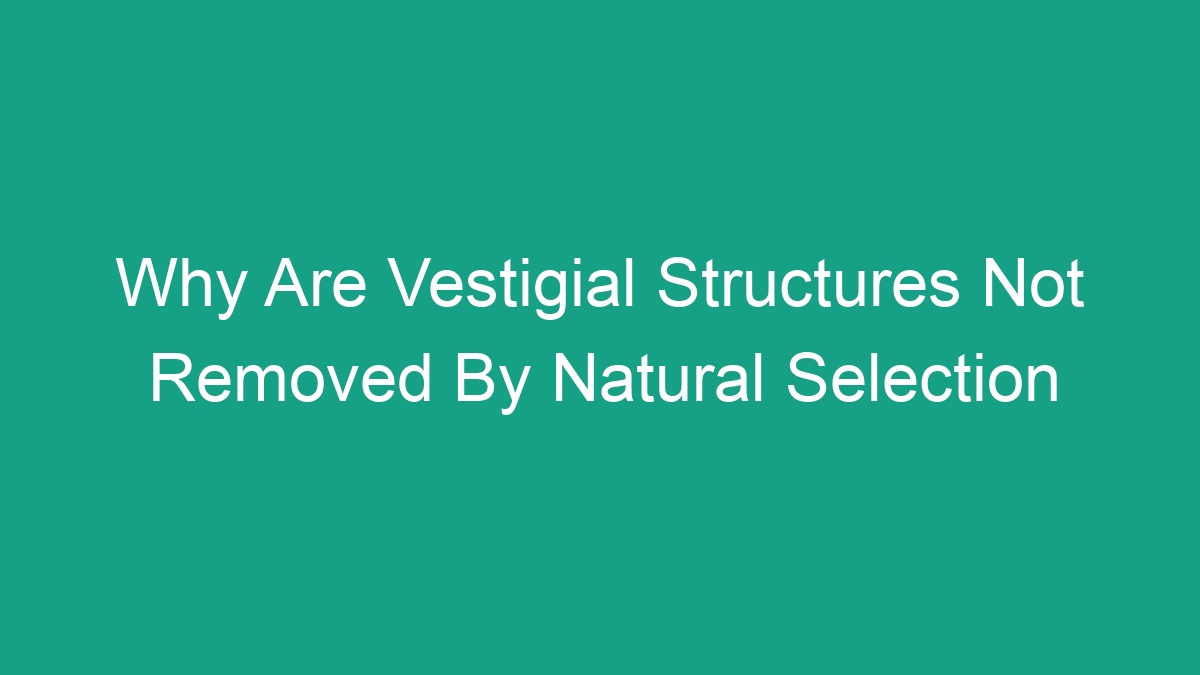
In the field of biology, vestigial structures are often a topic of fascination and intrigue. These structures are remnants of evolutionary history, once serving a purpose in the ancestors of an organism but now no longer necessary in the current form. Despite their apparent uselessness, these vestigial structures are not removed by natural selection. But why is this the case? To understand this, it’s essential to delve into the mechanisms of natural selection and the role of vestigial structures in the evolutionary process.
Natural Selection and Adaptation
Natural selection is the cornerstone of evolutionary theory, proposed by Charles Darwin in the 19th century. It is the process through which advantageous traits become more prevalent in a population over time, while disadvantageous traits are gradually eliminated. This occurs as a result of differential reproductive success, where individuals with certain traits are more likely to survive and produce offspring with the same traits.
The driving force behind natural selection is adaptation – the process through which individuals become better suited to their environment. As the environment changes, organisms must adapt to survive and reproduce. Certain traits or structures that are advantageous in a specific environment will be favored by natural selection, leading to their prevalence in a population. Conversely, traits that are not advantageous may be selected against and eventually disappear from the population.
Vestigial Structures: Relics of Evolution
Vestigial structures are remnants of features that had a function in the ancestors of a particular organism, but have lost their original purpose over the course of evolution. Examples of vestigial structures in humans include the appendix, the tailbone (coccyx), and the muscles that move the ears. In many cases, these structures serve no apparent function in the modern form of the organism.
The presence of vestigial structures is a powerful piece of evidence for evolution, as it indicates a historical change in the form and function of species over time. These structures often reflect the evolutionary history of a particular organism and provide insights into the ancestral forms from which they evolved.
The Persistence of Vestigial Structures
Despite their apparent uselessness, vestigial structures are not removed by natural selection. This raises the question: why do these structures persist in modern organisms? There are several factors that contribute to the persistence of vestigial structures in populations.
One factor is genetic drift, which refers to the random fluctuations in the frequency of certain traits in a population. In small populations, genetic drift can lead to the retention of traits that are not necessarily advantageous. This can result in the persistence of vestigial structures, even if they do not confer any fitness advantage to the individuals carrying them.
Another factor is pleiotropy, which occurs when a single gene influences multiple traits. Some genes are involved in the development of multiple structures or functions in an organism. As a result, a gene that once had a specific function may continue to be passed on to future generations, even if the original function is no longer necessary.
Additionally, vestigial structures may not necessarily impose a significant fitness cost to individuals. This means that natural selection may not exert strong pressure to eliminate these structures from the population. In some cases, the energy or resources required to maintain a vestigial structure may be minimal, allowing it to persist without significantly impacting an organism’s overall fitness.
The Role of Vestigial Structures in Evolution
Vestigial structures play a significant role in the evolutionary process, despite their apparent lack of function. They provide a window into the evolutionary history of a species, offering clues about the ancestral forms from which modern organisms have evolved. By studying vestigial structures, scientists can gain insights into the evolutionary changes that have shaped the diversity of life on Earth.
Furthermore, vestigial structures can also undergo exaptation, where a structure that once served one function may be co-opted for a different purpose. This process can contribute to the diversity of form and function in living organisms, as structures with a pre-existing foundation may be adapted for new and innovative uses. In this way, vestigial structures can contribute to the evolutionary potential of a species, even if they no longer serve their original function.
Conclusion
In conclusion, vestigial structures persist in modern organisms due to a combination of genetic, developmental, and evolutionary factors. While they may no longer serve a functional purpose, these structures retain historical significance and contribute to our understanding of the evolutionary process. Natural selection, while a powerful force in shaping the characteristics of populations, does not always lead to the elimination of vestigial structures. Instead, these structures continue to provide valuable insights into the history of life on Earth and the mechanisms that have driven its diversity.



